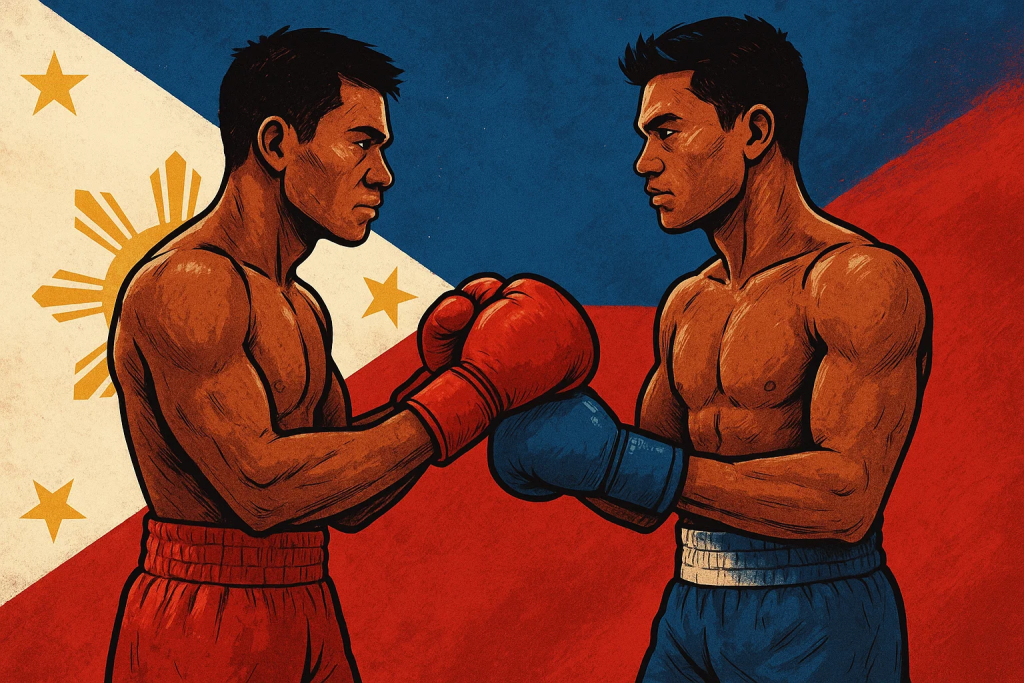Table of Contents
Executive Summary
The planned merger of Philippine boxing federations is a once-in-a-generation reset. For athletes, it promises a single, clearer pathway from grassroots to elite; potentially larger, more coordinated funding; consistent medical and welfare standards; and transparent selection. But consolidation also brings short-term turbulence: rule harmonization, eligibility transitions, and organizational politics. This athlete-first explainer breaks down what will likely change, what to watch out for, and how boxers, coaches, and parents can adapt in the first 12–18 months after unification.
Note: Details will depend on the final charter and implementing rules. Treat this as a practical field guide to common outcomes in federation mergers—not legal advice.

Why a Boxing Merger—and Why Now?
Boxing in the Philippines is both a national passion and a complex ecosystem. Historically, governance has been split across amateur/Olympic-style boxing (youth, juniors, U22, elite) and professional boxing (licensed by regulators, sanctioned by global bodies). A merger seeks to:
- Unify pathways: Reduce duplication between amateur and professional calendars, align talent ID, and ease transitions (e.g., elite amateurs turning pro or pros returning to national duty within rules).
- Centralize standards: One set of safety protocols, coaching certifications, anti-doping rules, safeguarding policies, and medical clearance—fewer gray areas.
- Increase bargaining power: A single national entity can negotiate stronger sponsorships, better international hosting rights, and stable funding with government and partners.
- Improve transparency: One central selection framework and ranking system reduces confusion and disputes.
The Boxing New Map: What a Unified Philippine Boxing Body Might Look Like
Expect a three-pillar structure:
- Athlete Pathway & Performance
- Grassroots → Youth → Junior → U22 → Elite (Olympic style) → Transitional/Pro development
- National training centers, regional hubs, and a performance analytics unit (centralized data on wins/losses, punch stats, efficiency, medical flags).
- Competitions & Events
- A national calendar integrating school, LGU, regional, and national championships; qualifying series; and windows for international commitments.
- A club/franchise circuit for development; national team trials on fixed dates; clear appeal procedures.
- Governance, Welfare & Integrity
- Anti-doping & whereabouts compliance aligned to WADA standards
- Safeguarding and athlete voice (ombudsman/athlete commission)
- Medical, concussion protocols, return-to-box policies
- Financial oversight, conflict-of-interest safeguards
What Changes for Boxing Athletes (and Why It Matters)
1) One Pathway, Fewer Dead Ends
- Before: Athletes often navigated parallel systems with different weigh-in rules, headgear policies, and ranking criteria.
- After: A unified pathway standardizes age bands, weight classes, and definitions (youth/junior/elite), making progression predictable.
- Win for athletes: You can plan 2–3 macrocycles per year with your coach, knowing which events truly influence national team selection.
2) Selection: Criteria You Can See (and Appeal)
- Expect a written selection policy that specifies:
- What counts (national ranking points, head-to-head, performance at named trials, medical availability).
- Tie-breakers and wild-card logic.
- Appeals timelines and independent panels.
- Action step: Track your ranking inputs (results, opponent quality) and keep all medical certificates. Transparent paper trails protect you.
3) Funding: Bigger Pool, Clearer Doors
- A merged body can bundle government support, sponsor deals, and host city agreements. Anticipate:
- Tiered athlete support (A/B/C carding) with stipends and competition grants tied to performance.
- Subsidized equipment, nutrition, and recovery services.
- Action step: Maintain an updated athlete dossier (results, academics if student-athlete, community work)—these help secure carding and sponsors.
4) Coaching & Corners: Unified Licenses and Education
- Coaches will pass through a common certification ladder with CPD (continuing professional development).
- Cornermen/cutmen likely need accredited first-aid, concussion awareness, and corner hygiene training.
- Action step (coach): Get accredited early; the first cohorts often enjoy grandfathering and priority at events.
5) Medical, Safety & Concussion Protocols
- Expect mandatory pre-bout medicals, baseline neurocognitive screening, cut management standards, and return-to-box criteria post-KO/RSCH/RSCO.
- Action step: Treat medical suspensions seriously. Logging symptoms honestly accelerates safe clearance and shows selectors you’re professional.
6) Anti-Doping: Tighter Compliance, Fewer Surprises
- Centralized whereabouts, Therapeutic Use Exemption (TUE) processes, and out-of-competition testing.
- Action step: Audit supplements; use only batch-tested products. Keep prescriptions and TUE filings tidy.
7) Insurance & Contracts
- A unified federation typically negotiates group accident/medical insurance for accredited events.
- If you’re pro or transitioning, expect model athlete agreements covering image rights, appearance fees, and national team obligations.
- Action step: Read the fine print—availability clauses, exclusivity, and social media conduct may affect your club/promoter deals.
8) International Alignment
- The merged body will clarify which international federation governs Olympic-style participation and how professional bouts integrate.
- Outcome: Fewer calendar clashes; clearer eligibility for SEA Games, Asian Games, Olympic qualifiers, and pro opportunities.
What Could Go Wrong (and How to Guard Against It)
A) Bureaucracy Creep
- Risk: Bigger organization, slower decisions.
- Your move: Learn deadlines and forms. Submit early; keep receipts and email trails.
B) Politics in Selection
- Risk: Perceived favoritism.
- Your move: Know the published criteria. If selections deviate, use the appeal pathway—politely, with evidence.
C) Transitional Confusion (Rules/Eligibility)
- Risk: New rules on headgear, weigh-ins, or pro eligibility.
- Your move: Ask your coach/federation liaison for a transition brief; request clarifications in writing.
D) Calendar Overload or Gaps
- Risk: Too many “must-attend” events or long dead zones.
- Your move: Build a primary calendar (selection events), a secondary calendar (development bouts), and a microcycle for taper/recovery.
E) Welfare Talk Without Teeth
- Risk: Policies on paper, enforcement shaky.
- Your move: Use the athlete hotline/ombudsman. Document concerns (venue safety, medical lapses); propose fixes.
The Boxing Athlete’s 90-Day Playbook (Post-Merger)
Days 1–15: Information Lock-In
- Download the new rulebook, selection policy, and calendar.
- Confirm your weight class under the updated chart.
- Verify medical requirements (pre-participation exam, concussion baseline, eye exam).
- Meet your coach to align macrocycle goals.
Days 16–45: Compliance & Conditioning
- Update your anti-doping whereabout details (if in testing pool).
- Complete any new coach/corner accreditation (if applicable).
- Book sparring blocks that simulate upcoming event formats.
- Start nutrition periodization (weight descent done early, not in fight week).

Days 46–90: Performance & Paperwork
- Enter one or two ranked events to place points on the board.
- Keep bout sheets, medicals, weigh-in data.
- Review your media kit (bio, photos, highlight clips) for sponsors and federation profiles.
- If selection is near, draft a short case memo (results + fitness + availability + coach reference).
For Parents & Young Boxing Enthusiasts: What Changes at Grassroots
- Safer gyms, clearer rules: Expect enforced hand-wrap checks, mouthguard, headgear for minors, and certified officials.
- Age-appropriate contact: More non-contact skill festivals for very young athletes; controlled contact as they progress.
- School ties: More formal school-to-club pipelines, PE programs, and regional development hubs.
- Costs & grants: A unified body is better placed to grant fee waivers, travel support, and equipment vouchers—ask your LGU/association.
For Boxing Coaches & Clubs: Upgrading Together
- Licensing ladder: Level-based coaching certificates with refreshers in cut management, concussion, safeguarding, and data tracking.
- Event hosting: Standardized ringside medical, paramedics on call, equipment checklists, and incident reporting.
- Data culture: Submit results in agreed formats so your boxers’ rankings update quickly—no data, no points.
- Community link: Collaborate with LGUs and schools to grow safe participation, not just medals.
Boxing Sponsorship & Media: New Rules of the Game
- Bundled inventory: With one federation, brands can support national teams + grassroots in a single package (kits, rings, center signage, content rights).
- Athlete guidelines: Expect unified brand placement rules at national events; read social media policies to avoid compliance slips.
- Storytelling: Athletes who maintain clean, consistent profiles (training clips, community work, academic progress) attract carding and sponsors.
Boxing Ethics & Integrity: Non-Negotiables
- Safeguarding: A zero-tolerance policy on abuse, harassment, exploitation; background checks for officials; training for all staff.
- Anti-match fixing: Education modules for athletes and coaches; reporting hotlines.
- Financial transparency: Annual reports; published selection criteria and minute notes to reduce rumor mills.
10 Red Flags Boxing Athletes Should Watch
- Selection criteria change mid-season without notice.
- Unclear or moving weigh-in standards.
- Poor ringside medical coverage.
- No concussion protocol after stoppages.
- Withheld travel allowances or reimbursements.
- No athlete representative in governance meetings.
- Unpublished calendar less than 60 days before key events.
- Pressure to fight through injury without medical clearance.
- Doping education not provided before testing begins.
- Conflicts of interest (selectors doubling as managers/promoters) without disclosure.
If you encounter these, document facts and escalate through the athlete commission or ombudsman.
Boxing: Build, Don’t Wait
- Athletes: Download rules, plan your event ladder, and get your medical & anti-doping in order.
- Coaches: Secure your license upgrade, schedule safety refreshers, and help athletes assemble selection dossiers.
- Parents: Engage your LGU/club for grants; insist on safeguarding and proper medical cover.
- Sponsors: Back the carding tiers and grassroots hubs; measure impact by safe participation growth and international results.
- Federation leaders: Publish transparent policies, open communication channels, and deliver a calendar athletes can trust.
A merger is a tool. What we build with it—clearer pathways, safer rings, stronger performances—depends on decisions we make now.
Final Words on Boxing
The merger of the Philippine boxing federations is framed as a once-in-a-generation reset that aims to simplify pathways, raise safety and integrity standards, and unlock more stable funding for athletes. Historically, governance has been split between amateur/Olympic-style boxing and the professional scene, creating duplicate calendars, inconsistent rules, and unclear selection criteria. Unification is intended to produce one athlete-first system with standardized policies on competition, welfare, coaching, and anti-doping—while giving the sport a stronger voice with government and sponsors. The article cautions that the first 12–18 months can be bumpy as rules and calendars are harmonized.
Why merge now?
Four drivers dominate: (1) a single, predictable pathway from grassroots to elite; (2) centralized safety and coaching standards; (3) consolidated bargaining power for sponsorships, hosting rights, and public funding; and (4) transparent selection and ranking frameworks. The new body is expected to stand on three pillars: (a) Athlete Pathway & Performance (regional hubs, national centers, analytics), (b) Competitions & Events (integrated national calendar, club/franchise circuits, clear trials and appeals), and (c) Governance, Welfare & Integrity (WADA-aligned anti-doping, safeguarding, medical and concussion protocols, financial oversight).

What changes for athletes?
- Unified pathway: Age bands, weight classes, and ranking logic align across the country, so boxers can plan two to three macrocycles per year and see exactly which events influence national selection.
- Transparent selection: A published policy should specify qualifying events, ranking points, head-to-head tiebreaks, medical availability, wild-card use, and appeals. Athletes are urged to keep meticulous records (results, opponent quality, medical certificates).
- Funding clarity: With one federation, government, sponsors, and hosts can pool resources into tiered athlete support (carding), travel grants, equipment subsidies, nutrition, and recovery services. Athletes should maintain an up-to-date dossier to strengthen carding and sponsorship cases.
- Coaching and corner standards: A unified licensing ladder and CPD will raise baseline competence. Cornermen may need accredited first-aid and concussion training. Coaches are encouraged to certify early.
- Medical and safety: Expect mandatory pre-bout medicals, baseline neurocognitive screens, consistent cut management, and strict return-to-box timelines after KO/RSCH/RSCO. Honesty during medical suspensions protects both health and selection credibility.
- Anti-doping compliance: Centralized whereabouts, TUE processes, and out-of-competition testing tighten discipline. Only batch-tested supplements and tidy prescription records are advised.
- Insurance and model contracts: Group insurance for accredited events and standardized athlete agreements (image rights, availability, social media conduct) reduce ambiguity—athletes must read the fine print.
- International alignment: Eligibility for SEA Games, Asian Games, Olympic qualifiers, and pro opportunities becomes clearer, with fewer calendar clashes.
- Bureaucracy creep: Bigger bodies can move slower. Athletes should learn deadlines, submit early, and keep paper trails.
- Selection politics: Knowing the written criteria and using formal, evidence-based appeals helps counter perceived favoritism.
- Rule transitions: Seek written clarifications on headgear, weigh-ins, and pro/amateur status during the changeover.
- Calendar imbalance: Build a layered schedule—primary (selection), secondary (development), and microcycles for taper and recovery.
- Welfare on paper only: Use the athlete ombudsman/hotline and document safety lapses to ensure follow-through.
The 90-day playbook post-merger:
Days 1–15: Download rulebook, selection policy, and calendar; confirm weight class; complete required medicals; align macrocycle with coach.
Days 16–45: Update anti-doping whereabouts; complete new accreditations; set sparring blocks and nutrition periodization.
Days 46–90: Enter ranked events to place points; archive bout sheets and weigh-ins; refresh media kit; prepare a concise selection case memo.
Implications for grassroots, coaches, and clubs:
At the entry level, expect safer gyms, age-appropriate contact, school-to-club pipelines, and potential fee waivers or travel support. Coaches and clubs will navigate a licensing ladder, standardized event safety (ringside medical, incident reporting), and data submission protocols so boxer rankings update quickly. Community ties with LGUs and schools are key to growing safe participation—not just pursuing medals.
Sponsorship and media:
A unified federation can sell bundled inventory across national teams and grassroots, making it easier for brands to invest meaningfully. Athletes who maintain clean, consistent public profiles (training clips, community work, academic progress) are better positioned for carding and sponsorships. Expect federation-wide brand placement rules and social media policies at events.
Integrity cornerstones:
Safeguarding (zero tolerance for abuse), anti-match fixing education, anti-doping, and financial transparency are non-negotiable. The article also flags ten red alerts—such as mid-season criteria changes, poor medical coverage, missing concussion protocols, and conflicts of interest—urging athletes to document issues and escalate through formal channels.
Call to action:
Athletes should immediately organize documentation, compliance, and calendars; coaches should upgrade licenses and safety refreshers; parents should secure grants and insist on safeguarding; sponsors should back carding tiers and hubs with outcome metrics; federation leaders must publish transparent policies and stable calendars. The merger is a tool—its value depends on collective action now to deliver safer rings, clearer pathways, and stronger international results.
Frequently Asked Questions (FAQ)
1) Will the merger change weight classes or equipment rules?
Likely there will be harmonization to a single chart of age divisions and weight classes, and standardized equipment rules (wraps, gloves, headgear for minors). Always check the latest technical handbook before competing.
2) How will national team selection work after unification?
Expect a published selection policy based on named trials, national ranking points, medical availability, and head-to-head results. There should also be a clear appeals process with timelines and an independent panel.
3) I’m a pro boxer. Can I still box for the national team?
Yes—many systems allow pros to represent the country under specific eligibility rules (calendar windows, medical compliance, anti-doping, and federation approval). The merged body should publish transition guidelines for pros and return-to-amateur cases.
4) What new support can athletes expect?
A unified federation can deliver tiered funding, event travel grants, insurance, medical & recovery services, and education (anti-doping, safeguarding, financial literacy). Availability depends on your carding tier and results.
5) What if I believe a selection decision was unfair?
Use the formal appeal path. Gather evidence (results, medical fitness, head-to-head data), stick to deadlines, and communicate professionally. Public rants rarely help; documentation does.
